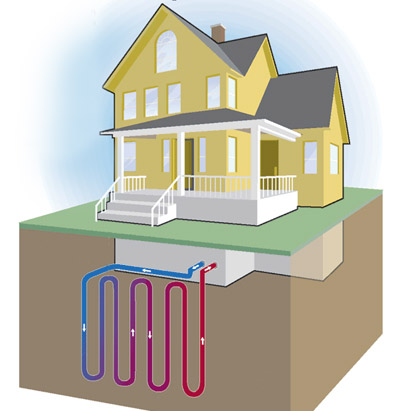A free source of renewable energy is sitting right beneath your feet that can cool your house in the summer and heat it during the winter. Two thirds of a homeowner’s typical energy bill is from heating, cooling, and hot water, and this area represents the biggest potential for savings. While operating similarly to a standard heat pump, geothermal heat pumps exchange energy with the Earth instead of the outdoor air. Tapping into the renewable solar energy stored in the ground can provide savings of up to 70% on utility bills. While outdoor temperatures can vary greatly between day and night or winter and summer, the temperature just a few feet below the Earth’s surface stays at an average of 55 degrees to 70 degrees Fahrenheit year round. This consistency in temperature allows geothermal units to be more efficient at heating and cooling than any regular heat pump or air conditioner. Plus there is no need for the use of any fossil fuels so the process is clean and environmentally friendly.

A series of pipes called a “loop” is installed in a both open and closed systems that circulates water through the sealed underground setup. The closed loop systems can be vertical, horizontal, or placed at the base of a pond if one is located adjacent to the residence. Open loop systems are an option if water is plentiful and low on minerals and use groundwater from a well. Energy is exchanged between the interior of the residence and the installed pipe system. The EPA says that “geothermal systems are the most energy efficient, environmentally clean, and cost effective space conditioning system available.







Comments are closed.